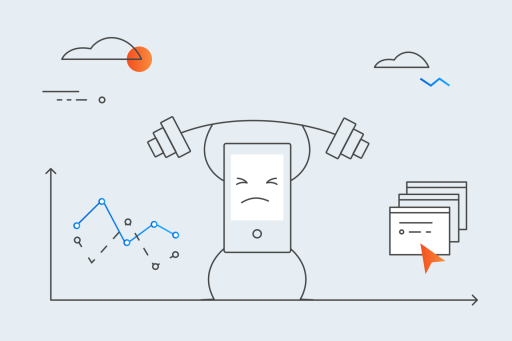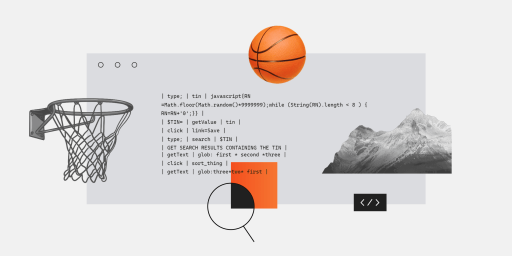BVA stands for boundary value analysis. Let’s find out what is boundary value analysis and how it works.
The process of testing software could be exhausting and time-consuming. So, what can be done to simplify this process? Testers use various techniques to test any application effectively, fast, and with optimal resources. One of them is boundary value analysis (BVA).
What does boundary value analysis do?
First, let’s answer the following question: What is BVA in software testing? The boundary value analysis technique in software testing analyzes how an application behaves with test data residing at the boundary values of the equivalence classes.
Suppose a printer has to produce copies ranging from 1 to 100. In that case, to apply boundary value analysis, the test is done on the boundaries. The highest value is 100, and the lowest is 1. The invalid values in the analysis will be 0 and 101.
The technique is effective because when using test data residing at the boundaries, the probability of identifying software errors is high. This is because the method finds errors at the input domain borders rather than in the center. So, the analysis entails selecting input values at their lowest and just above the maximum. Thus, for every range, there are two borders. The lower value is the beginning of the range, and the upper is the end. Also, the boundaries are the start and end of every partition.
How boundary value analysis works
In most cases, defects appear at the boundaries of input values. They include start and end or upper and lower values. Those are the boundary values, and the process of checking them is called boundary value analysis.
The checking technique finds defects at the boundaries of inputs and not in the center. Testers combine BVA with equivalence partitioning (ECP). ECP is a software analysis process that splits the software input data from which test cases get derived. The importance of the process is that it lowers the testing time because there will be fewer test cases.
So, BVA and ECP allow the tester to split the test condition into a partition. The tester can use the methods at any stage of the process.
The tester can derive test cases depending on the equivalence classes. Every boundary has a valid and invalid value, and they create test cases based on both values. The team selects one test case for every edge.
Identifying errors using the boundary value testing technique is efficient. The tester can choose several test cases from invalid and valid inputs based on past encounters.
The testing process: How to do boundary value analysis?
The testing team’s first step during BVA is to form equivalence partitioning. The following step is to focus on the correct part.
Below is aboundary value analysis example:
Let’s use the range from 16 to 60. There is a three-step process for identifying boundaries.
- The team determines the boundary value of the partition class. In this case, it is 16 and 60.
- The testers then find the boundary value that is below the actual boundary. It will be 15 and 59.
- Next, the team finds the boundary value above the actual limit. It will be 17 and 61.
If they put together all the above, below is the combination boundary value for the Criteria.
Valid Boundary Conditions are 16, 17, 59, 60
Invalid Boundary Conditions are 15, 61.
Application: When to use boundary value analysis?
Analyzing every test data set is exhausting and practically impossible due to financial constraints and time, especially when there are many input combinations. There is a need for an easier way or a particular approach for smartly picking test cases from a large pool, ensuring all test situations are covered. To achieve that, the testing team employs the BVA method. So, when do testers use boundary value analysis?
Testers use this technique when it is impossible to analyze a big pool of test cases individually. The method identifies errors quickly and easily. It is effective because the defects’ density at the boundaries is high. In addition, they do not test with the entire test data; instead, they only select the one at the limit, which minimizes the execution time.
The role of Boundary value analysis in software engineering
Testing software is necessary for an error-free application. Software engineering testing techniques are processes that help improve the quality and effectiveness of the software. With the right technique, testers can design better test cases that comprise a group of conditions or variables which they can use to determine if the application getting tested meets requirements or functions perfectly.
One of the common testing techniques is boundary value analysis (BVA).
So, what is BVA in software testing? The technique helps find errors in software because the number of mistakes at boundaries is high. The method is suitable for testing software because the testers do not test the entire set. Instead, they only select the values at the boundaries. So, the test duration is reduced.
But why is boundary value analysis critical in testing? The technique is critical in testing because it ensures that the system’s behavior is predictable for input and output boundary expectations. Furthermore, it is crucial to test boundary conditions because errors can occur at the boundaries.
The success of software testing using boundary value analysis depends on the identified equivalence classes, which, in turn, depend on how good the testing team is and how well they know the application. Unfortunately, identifying equivalence classes wrongly leads to the wrong BVA.
The method does not suit all applications. As mentioned earlier, it gets applied when it is impractical to analyze a large pool of test cases individually. Also, note that applications with open boundaries or one-dimensional boundaries are unsuitable for the BVA technique.
Conclusion
BVA is a reliable software testing method because it considers negative and positive values and even the minimum and maximum values. The process enables the testing team to create better test cases. That way, quality is assured when using this technique.



